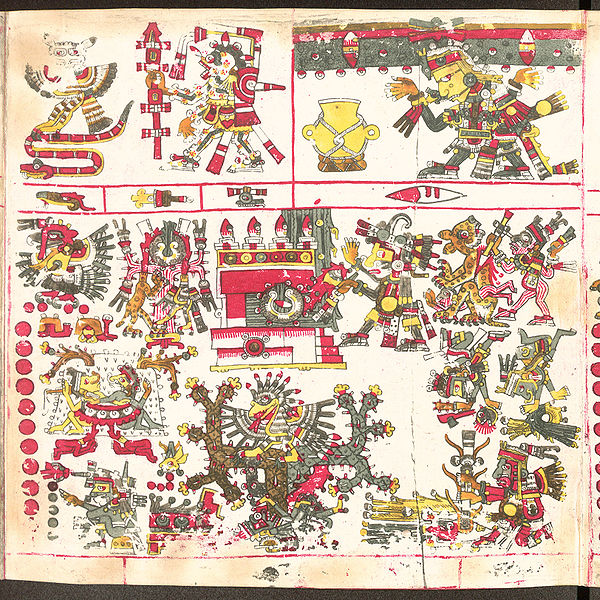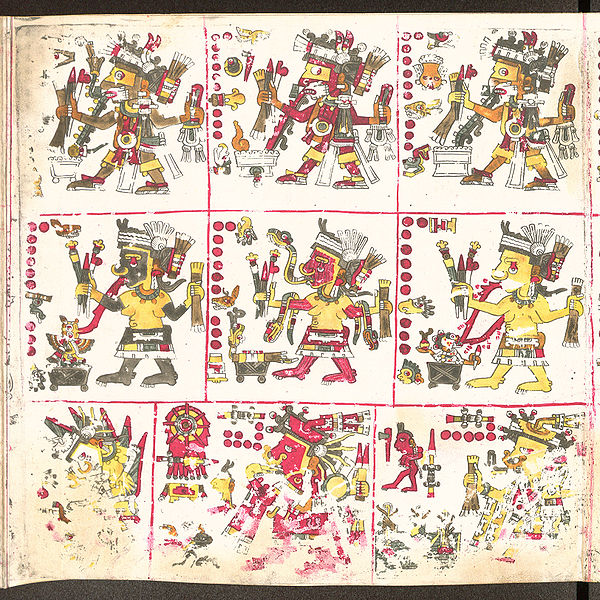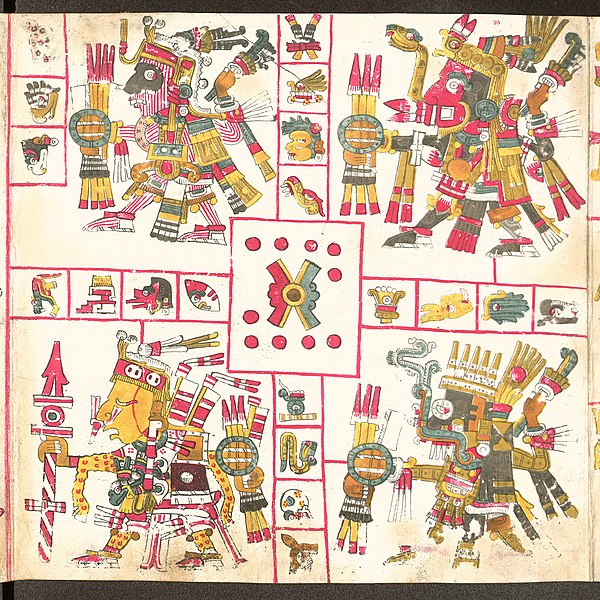In Aztec mythology, the god Nanahuatzin or Nanahuatl, the most humble of the gods, sacrificed himself in fire so that he would continue to shine on Earth as the Sun, thus becoming the sun god. Nanahuatzin means "full of sores." According to a translation of the Histoyre du Mechique, Nanahuatzin is the son of Itzpapalotl and Cozcamiauh or Tonantzin, but was adopted by Piltzintecuhtli and Xōchiquetzal. In the Codex Borgia, Nanahuatzin is represented as a man emerging from a fire. This was originally interpreted as an illustration of cannibalism. He is probably an aspect of Xolotl.
Nanahuatzin
Codex Borgia page 43 depicts a Sun god with the bumpy skin of Nanahuatzin and the canine snout of Xolotl. Beneath this sun-bearing Xolotl/Nanahuatzin lies the source of maize-a nude corn goddess who has star symbols on her body.
Aztec mythology is the body or collection of myths of the Aztec civilization of Central Mexico. The Aztecs were Nahuatl-speaking groups living in central Mexico and much of their mythology is similar to that of other Mesoamerican cultures. According to legend, the various groups who were to become the Aztecs arrived from the north into the Anahuac valley around Lake Texcoco. The location of this valley and lake of destination is clear – it is the heart of modern Mexico City – but little can be known with certainty about the origin of the Aztec. There are different accounts of their origin. In the myth the ancestors of the Mexica/Aztec came from a place in the north called Aztlan, the last of seven nahuatlacas to make the journey southward, hence their name "Azteca." Other accounts cite their origin in Chicomoztoc, "the place of the seven caves", or at Tamoanchan.

Mictlantecuhtli (left), god of death, the lord of the Underworld and Quetzalcoatl (right), god of wisdom, life, knowledge, morning star, patron of the winds and light, the lord of the West. Together they symbolize life and death.
Huitzilopochtli is raising up the skies of the South, one of the four directions of the world, surrounded by their respective trees, temples, patterns, and divination symbols.
Embodied spirits; Tonalleque (1), Cihuateteo (2).
Patterns of War; (1a) Tlaloc, (1b) Xiuhtecuhtli, (2a) Mixcoatl, (2b) Xipe-Totec.






